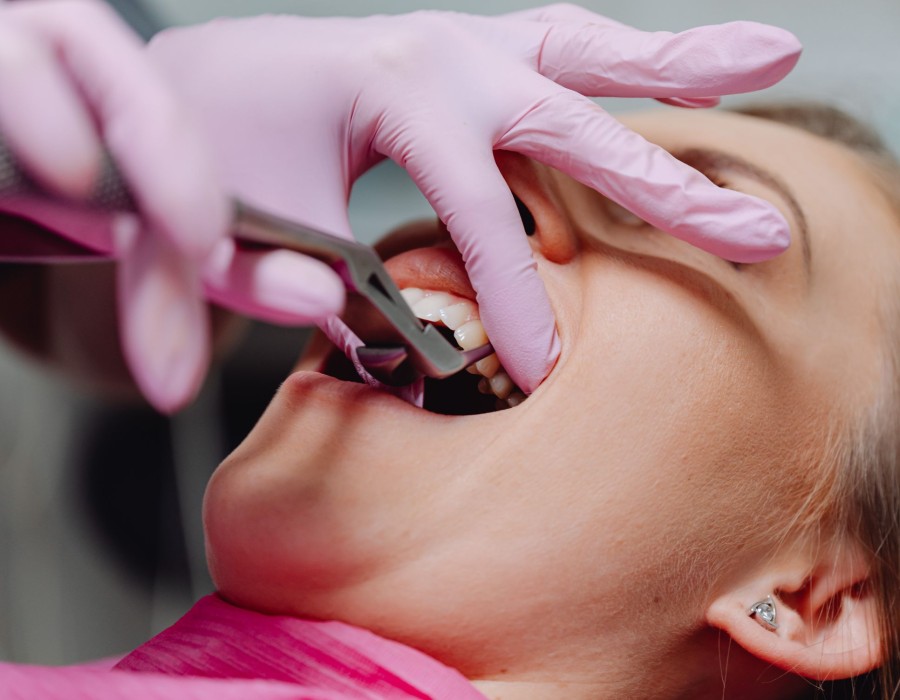When is tooth removal necessary is a common question many people ask when they face dental problems. Tooth removal, also known as tooth extraction, is often seen as a last resort when other treatments aren't sufficient. Whether due to decay, infection, or other dental issues, removing a tooth can help prevent further complications and restore overall oral health. This article explores when Tooth Removal may be necessary and the circumstances that warrant such a procedure.
Reasons for Tooth Removal:
Tooth removal may be needed for a variety of reasons, ranging from serious decay to crowding. Understanding why and when a tooth needs to be extracted is essential for maintaining long-term oral health.
Common reasons for tooth removal include:
- Severe tooth decay – When a cavity is too large to repair with a filling or crown, extraction may be necessary to prevent infection
- Infection – If a tooth becomes infected and cannot be saved with a root canal, it may need to be removed to stop the spread of bacteria
- Trauma or damage – A tooth that has been broken or severely damaged due to injury may need to be extracted
- Wisdom teeth problems – Wisdom teeth often need to be removed if they are impacted, causing pain or infection
- Crowding – In orthodontic treatment, tooth removal may be required to create space for other teeth to align properly
When any of these issues occur, removing the affected tooth may be the best way to prevent further complications and maintain oral health.
The Tooth Removal Process:
Tooth removal is a relatively straightforward procedure that can usually be performed by your general dentist or an oral surgeon, depending on the complexity. The process varies based on the location and condition of the tooth.
Here's a breakdown of the general steps involved in tooth removal:
- Consultation and X-rays – Before the procedure, your dentist will take X-rays to assess the tooth and surrounding bone structure
- Anesthesia – Local anesthesia will be administered to numb the area around the tooth, ensuring you are comfortable throughout the procedure
- Extraction – Using specialized tools, the dentist will loosen the tooth from the socket and carefully remove it
- Post-extraction care – After the tooth is removed, you’ll receive instructions on how to care for the extraction site and manage any discomfort
While the procedure itself is generally quick and straightforward, recovery time can vary depending on the complexity of the extraction.
Benefits of Tooth Removal:
While tooth removal may seem daunting, it provides several important benefits for your oral and overall health. Removing a problematic tooth can help alleviate pain, prevent infection, and even improve the alignment of your other teeth.
The benefits of tooth removal include:
- Preventing the spread of infection – An infected tooth can cause further complications, including abscesses or damage to surrounding teeth. Removal eliminates this risk
- Pain relief – If a tooth is severely decayed or cracked, removal can relieve the pain and discomfort it may be causing
- Improved oral health – Removing damaged or infected teeth can improve the overall health of your mouth, reducing the risk of further issues
- Better alignment – In orthodontic treatment, tooth removal can help create space for the remaining teeth, improving bite and alignment
Tooth removal often results in long-term oral health improvements when done in a timely and professional manner.
Recovery After Tooth Removal:
Recovering from a Tooth Removal Treatment procedure requires some care to ensure proper healing and minimize the risk of complications. Depending on the type of extraction, recovery times can range from a few days to a few weeks.
Here are some tips to help with recovery after tooth removal:
- Rest and ice – Rest for the first 24-48 hours to help with healing, and apply ice to the outside of your face to reduce swelling
- Follow your dentist’s instructions – Adhere to your dentist’s post-extraction instructions, including taking prescribed medications and avoiding certain foods
- Avoid smoking and sucking – These activities can disrupt the healing process and lead to complications such as dry socket
- Maintain good oral hygiene – Gently rinse your mouth with warm salt water after 24 hours to help prevent infection
Following these steps will help ensure a smooth recovery and reduce the risk of complications.
Alternatives to Tooth Removal:
While tooth removal is sometimes necessary, there are alternative treatments that can help preserve your tooth when possible. It’s important to explore all options before opting for extraction, as preserving your natural teeth is generally the best choice.
Alternatives to tooth removal include:
- Root canal therapy – If a tooth is infected but otherwise healthy, a root canal may be able to remove the infection and save the tooth
- Fillings and crowns – For minor decay or damage, fillings or crowns can restore the tooth’s function and prevent the need for extraction
- Orthodontics – In cases of crowding or misalignment, braces or clear aligners can help avoid extraction by creating space for the teeth
In many cases, your dentist will explore all available treatment options before recommending tooth removal, ensuring the best possible outcome for your dental health.
Conclusion:
When is tooth removal necessary? The answer depends on the severity of the dental issue. Whether due to decay, infection, or other concerns, tooth extraction can be an effective solution to prevent further oral health problems. While the idea of losing a tooth may be unsettling, the procedure offers several benefits, including pain relief, infection prevention, and improved alignment. If you're facing tooth issues, consult your dentist to determine the best course of action and maintain a healthy, functional smile.





Comments